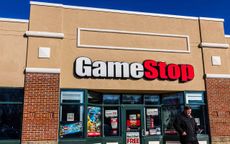8 Stocks to Own in '08
Our picks range from a familiar phone giant to a Mexican cement maker.

Making money by throwing darts at stock tables will be tough in 2008 if market gains are as modest as we predict they'll be. Instead, it will be a year in which the spoils go to the most-astute stock pickers. In that vein, we present our best bets for 2008 (listed in alphabetical order; stock prices are to November 12). See A Winning Crop for 2007 to see how our '07 picks fared.
| Row 0 - Cell 0 | A Winning Crop for 2007 |
| Row 1 - Cell 0 | Where to Invest in 2008 |
| Row 2 - Cell 0 | 2008 Bond Forecast |
AT&T (symbol T)
AT&T says it's everywhere, from "Japaridelphia" to "Chilondoscow." It's also in the middle of the hullabaloo surrounding Apple's fast-selling iPhone. AT&T may not reap enormous profits right away from its exclusive deal to be the wireless carrier of choice for the iPhone. But as Apple cuts iPhone prices even more, AT&T is likely to attract millions of additional customers. With 65.7 million mobile-phone subscribers, AT&T has established wireless as its main focus. It won't be long, in fact, before wireless services surpass AT&T's declining land-line phone business.

Sign up for Kiplinger’s Free E-Newsletters
Profit and prosper with the best of expert advice on investing, taxes, retirement, personal finance and more - straight to your e-mail.
Profit and prosper with the best of expert advice - straight to your e-mail.
AT&T's empire now includes Ma Bell, four original Baby Bells, the wireless network and the Yellow Pages. Its next move will be into entertainment and programming. Despite its huge size (market value: $238 billion), this ever-changing company should deliver earnings growth of 8% to 12% a year for some time. The stock, which yields 3.7%, could reach $50 over the next year.
CEMEX (CX)
The world is spending like mad on roads, schools, airports and power plants, and suppliers of basic materials are benefiting. From a humble start in 1906, Mexico-based Cemex has become the world's largest producer of ready-mix concrete. Ready-mix, the stuff that comes in bags, is ideal for small jobs anywhere. Cemex is also a global force in traditional cement, which is used for giant building projects, such as bridges and tunnels, and in aggregates, which are used for road paving. Cemex has been hurt by the housing recession in the U.S., which accounts for about 25% of its sales and profits, but sales in Eastern Europe and South America are a growing part of its revenue mix. That makes Cemex a way to invest in global economic growth.
Cemex's earnings have tripled since 2003, but they were down 10% in the most recent quarter from the year-earlier period. As a result, Cemex's American depositary receipts have slumped 34% since June. But Cemex predicts that 2008 will be better. The stock should rise to $35 in the coming year.
CONSOL ENERGY CNX)
Coals to Newcastle? It's no joke. U.S. coal exports rose 11% in 2007, with shipments out of East Coast ports up 29%. Germany, the Netherlands and, yes, England are among the big buyers. High-sulfur Appalachian coal works just fine in high-tech, scrubber-equipped European power plants. With their currencies so strong, Europeans have no problem paying an average of $54 a ton for Appalachian coal, which commands $45 a ton in the U.S. Consol is the largest coal exporter, and its mines are concentrated in the east, so its coal has a relatively short distance to travel on the way to Europe.
Consol's shares nearly doubled in 2007. But with analysts expecting profits to rise sharply in 2008, the stock has more room to run.
Most semiconductor stocks have lagged the rest of the technology sector since it started warming up last summer. So many chips go into PCs, DVD players, big-screen TVs and other fun stuff that the threat of a plunge in U.S. consumer spending hurts chip makers worse than it does com-panies that sell to businesses, such as Cisco Systems or IBM. But Intel's third-quarter sales beat analysts' forecasts handily, suggesting that business was better than most investors believed. Intel logs more than 80% of its sales outside the U.S., so concerns about American parents telling kids "no more gadgets" are misplaced. Meanwhile, Intel's profits from supplying wireless companies are growing rapidly.
Intel has a market value of $147 billion -- more than all of its U.S.-based competitors combined. The stock should benefit from investorsU continuing comfort with large, growing companies that have a worldwide reputation. Watch for the shares to hurtle past $30 for the first time since 2004.
PAREXEL (PRXL)
There is long-term growth potential in helping companies develop drugs and manage clinical trials. Drug makers, including young biotech companies (half of Parexel's new clients), are farming out more development work each year. Combine that trend with the globalization theme (two-thirds of Parexel's revenues originate overseas) and you see why we think the stock is a winner.
Parexel, with a market value of $1.2 billion, is the smallest of the eight com-panies on our list. But size has no obvious advantages in this business. At 27 times estimated earnings for the June 2008 fiscal year, shares of Parexel look a bit pricey, but its price-earnings ratio is actually lower than those of most of its peers. A 25% gain in the coming year would not be a shock.
STANLEY WORKS (SWK)
The housing and remodeling sectors are weak, so this may not seem like a great time to invest in a company known for hand tools, locks and automatic doors. But Stanley has smartly evolved into a worldwide, one-stop shop for professional carpenters and mechanics, with 40% of the companyUs sales outside the U.S. Stanley is in far better shape than its competitors, and it can make small acquisitions inexpensively, using fixed-rate debt as low as 5%.
Even without acquisitions, prospects are rosy. Revenues and earnings from security products, StanleyUs second-largest and most-profitable unit, are rising 25% and 35% a year, respectively. For a relatively simple, growing company whose shares trade at a reasonable 13 times earnings, Stanley is as reliable as its tools. Look for the shares to vault into the $60s.
TEVA PHARMA (TEVA)
With hundreds of drug applications pending in the U.S. and Europe, the king of generic drugs should continue to generate strong sales and earnings growth for years to come. Teva is based in Israel, but its fortune is no more tied to the Middle East than Cemex's is connected to Mexico. Nor does Teva depend primarily on the developed world. ItUs the number-one generics supplier in Chile and Venezuela, sales are surging in Poland and Russia, and the company expects to benefit from plans to introduce government-assisted health benefits in such fast-growing nations as Brazil and Turkey, where there is little or no private health insurance.
Although 2007 was a relatively slow year for the introduction of new generic drugs, TevaUs shares advanced 45%. Business will be better in the coming year. As always, investors in Teva have to be aware of legal risks. In the U.S., where Teva generates half of its sales, the company regularly squares off in court against brand-name drug companies that want to block it from selling knockoffs. But Teva shares have returned 23% annualized over the past ten years, so the company can afford plenty of excellent lawyers.
XTO ENERGY (XTO)
Compared with crude oil, the price of natural gas is depressed. This is curious because gas, which has a reputation as a clean-burning fuel, usually fetches a premium to oil on an energy-equivalent basis. At some point, gas prices will again rise, and companies with proven reserves in promising places, such as TexasUs Barnett Shale, will prosper. XTO is one such producer.
By discovering new gas fields and acquiring existing ones, XTO normally adds 30% annually to its reserves, and it expects to boost production in 2008 by 17%. XTO says that each of its outstanding shares represents 66,000 cubic feet of gas in proven reserves or low-risk sites where the company is likely to find gas. At today's prices, investors essentially own $530 worth of gas per share, far more than the current stock price.
Get Kiplinger Today newsletter — free
Profit and prosper with the best of Kiplinger's advice on investing, taxes, retirement, personal finance and much more. Delivered daily. Enter your email in the box and click Sign Me Up.

-
 Stock Market Today: Dow Drops Another 2,231 Points to Hit a Correction
Stock Market Today: Dow Drops Another 2,231 Points to Hit a CorrectionThe Nasdaq Composite, meanwhile, entered a new bear market with its latest slide.
By Karee Venema Published
-
 GameStop Is Closing More Stores — Here’s Where to Shop Instead
GameStop Is Closing More Stores — Here’s Where to Shop InsteadAs GameStop closes more locations, here’s how to score similar deals on games, consoles and collectibles at other major retailers.
By Kathryn Pomroy Published
-
 Fed Leaves Rates Unchanged: What the Experts Are Saying
Fed Leaves Rates Unchanged: What the Experts Are SayingFederal Reserve As widely expected, the Federal Open Market Committee took a 'wait-and-see' approach toward borrowing costs.
By Dan Burrows Published
-
 Fed Sees Fewer Rate Cuts in 2025: What the Experts Are Saying
Fed Sees Fewer Rate Cuts in 2025: What the Experts Are SayingFederal Reserve The Federal Reserve cut interest rates as expected, but the future path of borrowing costs became more opaque.
By Dan Burrows Published
-
 Fed Cuts Rates Again: What the Experts Are Saying
Fed Cuts Rates Again: What the Experts Are SayingFederal Reserve The central bank continued to ease, but a new administration in Washington clouds the outlook for future policy moves.
By Dan Burrows Published
-
 Fed Goes Big With First Rate Cut: What the Experts Are Saying
Fed Goes Big With First Rate Cut: What the Experts Are SayingFederal Reserve A slowing labor market prompted the Fed to start with a jumbo-sized reduction to borrowing costs.
By Dan Burrows Published
-
 Stock Market Today: Stocks Retreat Ahead of Nvidia Earnings
Stock Market Today: Stocks Retreat Ahead of Nvidia EarningsMarkets lost ground on light volume Wednesday as traders keyed on AI bellwether Nvidia earnings after the close.
By Dan Burrows Published
-
 Stock Market Today: Stocks Edge Higher With Nvidia Earnings in Focus
Stock Market Today: Stocks Edge Higher With Nvidia Earnings in FocusNvidia stock gained ground ahead of tomorrow's after-the-close earnings event, while Super Micro Computer got hit by a short seller report.
By Karee Venema Published
-
 Stock Market Today: Dow Hits New Record Closing High
Stock Market Today: Dow Hits New Record Closing HighThe Nasdaq Composite and S&P 500 finished in the red as semiconductor stocks struggled.
By Karee Venema Published
-
 Stock Market Today: Stocks Pop After Powell's Jackson Hole Speech
Stock Market Today: Stocks Pop After Powell's Jackson Hole SpeechFed Chair Powell's Jackson Hole speech struck a dovish tone which sent stocks soaring Friday.
By Karee Venema Published